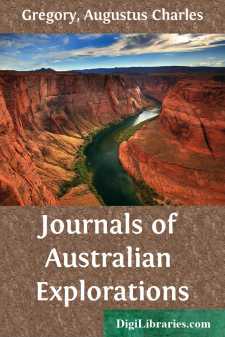Categories
- Antiques & Collectibles 13
- Architecture 36
- Art 48
- Bibles 22
- Biography & Autobiography 813
- Body, Mind & Spirit 142
- Business & Economics 28
- Children's Books 17
- Children's Fiction 14
- Computers 4
- Cooking 94
- Crafts & Hobbies 4
- Drama 346
- Education 46
- Family & Relationships 57
- Fiction 11829
- Games 19
- Gardening 17
- Health & Fitness 34
- History 1377
- House & Home 1
- Humor 147
- Juvenile Fiction 1873
- Juvenile Nonfiction 202
- Language Arts & Disciplines 88
- Law 16
- Literary Collections 686
- Literary Criticism 179
- Mathematics 13
- Medical 41
- Music 40
- Nature 179
- Non-Classifiable 1768
- Performing Arts 7
- Periodicals 1453
- Philosophy 64
- Photography 2
- Poetry 896
- Political Science 203
- Psychology 42
- Reference 154
- Religion 513
- Science 126
- Self-Help 84
- Social Science 81
- Sports & Recreation 34
- Study Aids 3
- Technology & Engineering 59
- Transportation 23
- Travel 463
- True Crime 29
Journals of Australian Explorations
Description:
Excerpt
AUSTRALIAN EXPLORATIONS.
MESSRS. GREGORY'S EXPEDITION TO THE EAST AND NORTH OF SWAN RIVER.
1846.
EARLY CONDITION OF WEST AUSTRALIA.
The colony of Western Australia was established in 1829; but its isolation from the older settlement of New South Wales rendered it necessary to import all the horses, cattle, and sheep by sailing vessels from Tasmania, or other remote sources, while the heavy losses and difficulties attending long sea voyages prevented any large importations of stock--so that, though there was a fair rate of increase, the flocks and herds of the settlers had found sufficient pasturage for the first ten years on the banks of the Swan River and its upper valley, the Avon, together with the coast district southward to the Vasse Inlet; but after 1840 the stock-owners began to feel that all prospect of material increase must be relinquished unless additional pastures could be discovered.
Several public as well as private expeditions were undertaken for the purpose of ascertaining whether in the interior or along the coast on either side of the settlement there existed any available country, but they had only encountered dense scrubs of acacia and eucalyptus, with salt marshes and scarcity of fresh water in the interior. The coast to the east had been traversed from Adelaide to King George's Sound by Mr. Eyre, and found to be altogether unfit for settlement, while to the north the coast presented a series of sandy plains for more than 200 miles.
It may now appear extraordinary that the earlier explorers in Australia were so frequently unsuccessful in their endeavours to penetrate the interior; but the scarcity of suitable horses, the unsuitable character of the saddlery, cumbersome camp equipment, and deficiency of knowledge regarding the seasons in the interior, all combined to defeat the first explorers in districts which have since been traversed with comparative facility.
In 1846 the known country had become so nearly stocked to the full extent of its capability that the leading question of interest with the settlers was, where new runs could be discovered; and, among many others, the Messrs. Gregory proposed to attempt the further exploration of the interior.
Messrs. A.C. and F.T. Gregory, who were attached to the department of the Surveyor-General, applied for three months' leave of absence for the purpose; but it was eventually arranged that the expedition should be under the auspices of the Government, which provided four horses, and voted 5 pounds for the purchase of equipment, the remainder being supplied at private expense.
The party consisted of A.C. Gregory, F.T. Gregory, and H.C. Gregory, provided with four horses and seven weeks' provisions, the equipment being reduced to the least possible weight. The starting point was Mr. T.N. Yule's station, in the Toodyay district, sixty miles north-east from Perth.
The following is a transcript of the journal:--
DIARY.
EXPLORATION TO EAST OF SWAN RIVER, 1846.
7th August, 1846.
Leaving Mr. Yule's farm at Boyeen Spring, passed Captain Scully's station at Bolgart Spring at 10.15 a.m.; thence steered north 70 degrees east over sandy downs, thinly timbered with eucalyptus; at 12.50 p.m....


